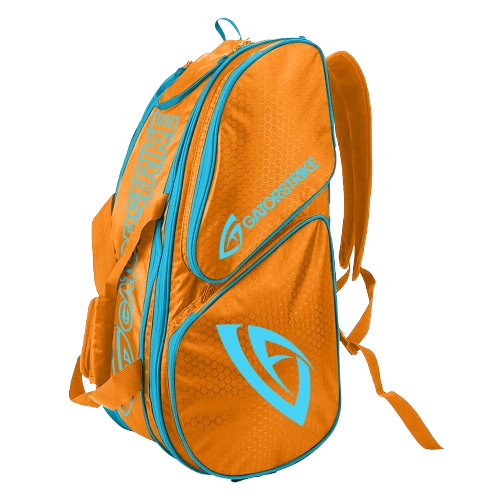
Crafting Precision: The Technology Behind Advanced Pickleball Paddles
Share
- Introduction: The Evolution of Pickleball Equipment
Pickleball, a sport once characterized by simplicity, has undergone a quiet revolution. What began as a game with rudimentary wooden paddles has evolved into a sport where technology now dictates the outcome of each match. At the heart of this transformation is the paddle—the unsung hero, designed not only for power but for precision, balance, and control. The game itself may seem straightforward, but the science behind today's advanced pickleball paddles is anything but. Each swing, every hit, is now powered by technology that takes the sport to new heights.
- Material Matters: The Shift from Wood to Composite
The humble wooden paddle was the genesis of the sport. Solid, reliable, and simple. But as the sport grew, so did the demands of its players. Enter composite materials—lightweight, durable, and capable of elevating gameplay to a professional level. These new materials, from fiberglass to carbon fiber, revolutionized the feel and performance of the paddle. Fiberglass offers a softer touch, while carbon fiber gives players a harder, more precise hit. The evolution from wood to composite isn't just about weight—it’s about how the paddle responds to your every move, giving players an edge in finesse and power.
- Core Construction: Balancing Power and Control
Beneath the sleek surface of every advanced pickleball paddle lies the core—the heartbeat of the paddle itself. The core dictates how the paddle will behave when the ball strikes it, making it the foundation for both power and control. Most modern paddles feature polymer, Nomex, or aluminum cores. Polymer cores offer balance, absorbing shock while maintaining a solid hit. Nomex, a paper-like material coated in resin, creates a more aggressive pop, ideal for power players. Aluminum cores bring control to the forefront, offering touch and feel like no other. Every player's style can be matched with the perfect core, crafting a unique relationship between paddle and performance.
- Surface Texture: Creating Spin and Accuracy
A paddle’s surface might look smooth and unassuming, but its texture is where the magic happens. Textured surfaces have become the secret weapon for players looking to dominate their spin game. With a rougher surface, players can generate more friction between the ball and paddle, creating the kind of spin that can send opponents scrambling. Spin isn’t just about flash—it's a strategy. It disrupts rhythm, forces mistakes, and opens up the court for that winning shot. Surface texture, once an afterthought, is now a key element in crafting precision.
- Weight Distribution: The Science of Balance
The weight of a paddle might seem like a basic specification, but in the world of advanced pickleball, every ounce counts. A paddle’s overall weight is important, but how that weight is distributed is what truly influences gameplay. Head-heavy paddles generate more power but can slow down reaction time at the net. Conversely, lighter paddles, with weight focused near the handle, allow for quicker wrist action and faster volleys. Striking the right balance of weight distribution allows players to move seamlessly from powerful baseline shots to lightning-fast net play, turning the paddle into an extension of the hand.
- Grip Design: Melding Comfort with Performance
It’s not just about the paddle’s face or core. The grip, often overlooked, is where the player connects with the paddle. A well-designed grip can change the entire feel of the game, blending comfort with performance. Modern grips focus on ergonomics, ensuring that the player’s hand remains comfortable even during long, grueling matches. The material, size, and texture of the grip all contribute to better control, reducing slippage and minimizing the risk of hand fatigue. It’s a delicate art: too large, and you lose feel; too small, and you lose power. The right grip enhances both your connection to the paddle and your control over the game.
- Edge Guard Technology: Protecting Without Sacrificing Performance
While it may seem like a minor detail, the edge guard is a critical component of the paddle. It protects the paddle from wear and tear, ensuring it lasts through countless games. But not all edge guards are created equal. Too bulky, and they hinder performance; too light, and they fail to protect the paddle. Today’s advanced paddles have edge guards that strike the perfect balance—providing durability without adding unnecessary bulk. Players can rely on their paddle’s integrity game after game, knowing that performance won’t be compromised, even as the paddle endures the rigors of competitive play.
- Customization: Tailoring the Paddle to the Player
One size does not fit all. Every player brings their own style to the court, and advanced pickleball technology recognizes that. The ability to customize paddles—whether by adjusting the weight, grip size, or core composition—allows players to find the perfect fit for their game. Some players thrive on power, others on finesse. Advanced paddles can be fine-tuned to emphasize spin, control, or pure force. The technology has become personal, allowing players to craft a paddle that feels like an extension of themselves, transforming how they approach the game and unlocking their true potential on the court.
- Conclusion: A New Era of Precision in Pickleball
The technology behind advanced pickleball paddles has redefined what’s possible on the court. From cutting-edge materials and finely tuned cores to ergonomically designed grips and surface textures that put spin within reach, every aspect of the paddle has been reimagined to enhance precision and performance. As the sport continues to grow, so too will the innovation driving its equipment. For players looking to refine their game and push the boundaries of what they can achieve, the modern pickleball paddle is more than a tool—it’s a finely crafted instrument, built for mastery.

















